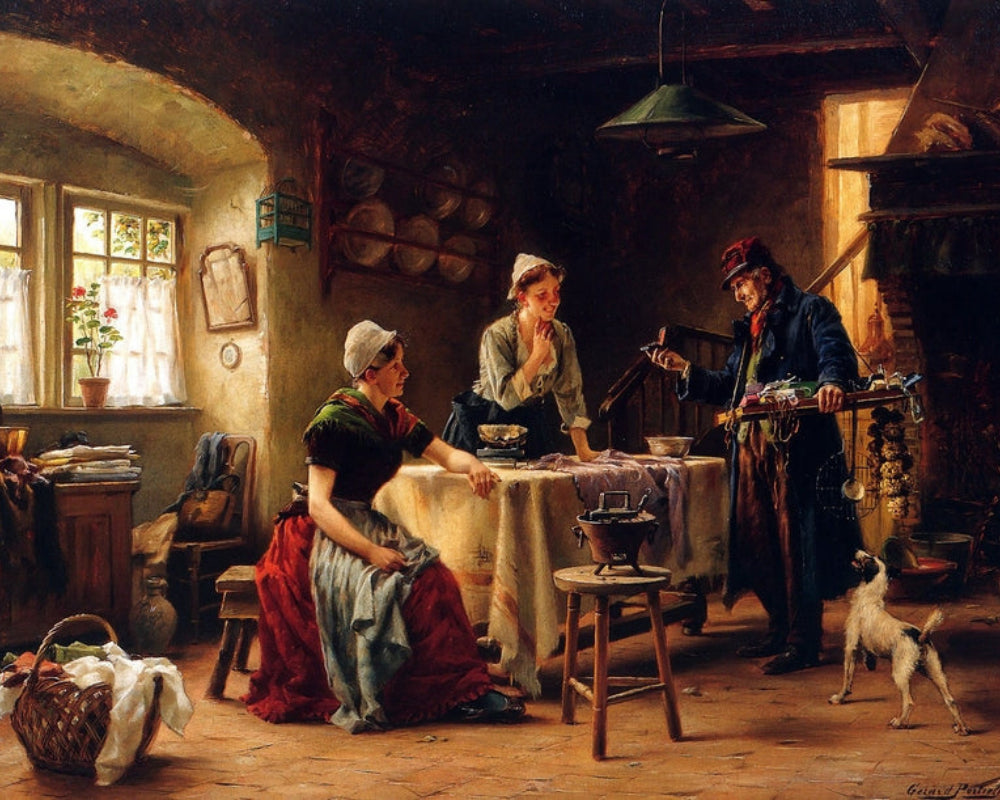What is a Huguenot anyway?
Posted by PAUL MONK

In my historical fiction novel Merchants of Virtue Jacob and Jeanne are known as Huguenots. You may or may not have heard the term before. Either way, if you’ve read the book then you’ll know that a Huguenot is really another way of saying French Protestant. Without going into the details of how the word came about, I thought I’d jot down a few lines for those who hadn’t heard of the term before.

As I say, Huguenot simply designates a French Protestant who, incidentally, tended to be among the well-heeled and highly skilled classes in France. But when the French catholic king banned Protestantism in the late 17th century, Huguenots had three choices for their future: abandon their faith, go to prison or escape.
The First “Refugees”
Those who managed to flee persecution took with them their technical expertise as merchants, silk weavers, clock makers, silversmiths, doctors and lawyers to Germany, Switzerland, Belgium, Holland, England and the Americas where they found refuge. The word refugee (refugié in French) comes from those times.

These countries of adoption greatly benefited from the influx of hundreds of thousands of French refugees often whose only baggage was their know-how and expertise. Holland received much of the intellectual and commercial flower of the French Protestants. For example, the municipal records of Haarlem state that the exiles reached there “in a sorely destitute state, lacking the means of life, and in no wise able to sustain their families.”
Spreading Huguenot Know-how
But they did not require town help or support for very long. Their woollen manufacture increased till the town became too small for them, and they built the Nieuwe Stad (new city). Besides cloth, druggets, and such woollen stuffs, they introduced into Haarlem a variety of silk product, velvet, plush, and the like, which, though coarser than the original manufactures at Lyons, Tours and Paris, were long in great demand abroad because cheaper[i].
Huguenots in their thousands found refuge across the Channel in England where their weaving skills greatly improved English cloth-making quality and production. Spitalfields in London became one of the great centres of silk production. With such a boost in textile expertise no wonder Britain was able to lead the industrial revolution a century later!
Huguenot Legacy
In many cases Huguenots form the missing piece of the puzzle of our collective and individual identity. Although they have been largely overlooked in today’s history books, they have nonetheless given us many great men and women right up to our

modern times, from President Roosevelt to John D. Rockefeller, and from Joan Crawford and Sir Laurence Olivier to Judy Garland, to name but a few. And did you know that Paul Revere was of Huguenot ancestry?
Know any others?
But maybe the greatest legacy they have passed down is their determination to keep their faith and convictions in adversity and against all the odds—not to mention their undying love of democracy and tolerance.
Co-founders of New York
It is a little remembered fact that Huguenots helped found great cities such as New Amsterdam later to become New York. In fact, a child of Huguenot parents was born in 1614 in the New Netherlands colony making it the first male to be born of European parentage in North America. His name was Jean Vigné.

And did you know that Huguenots were among the first European settlers to establish a permanent settlement on Staten Island? New Rochelle on Manhattan was also founded by Huguenots most of whom had fled La Rochelle located on the west coast of France.
So, it’ll come as no great surprise to you that book three of my trilogy is titled LAND OF HOPE.
 I’ve put together a 3-book bundle which means you can now download the whole trilogy at a reduced price 🙂
I’ve put together a 3-book bundle which means you can now download the whole trilogy at a reduced price 🙂
Just click on the link to start reading Merchants of Virtue,Voyage of Malice and Land of Hope today!
[i] Reference from The French Blood In America by Lucian J. Fosdick

